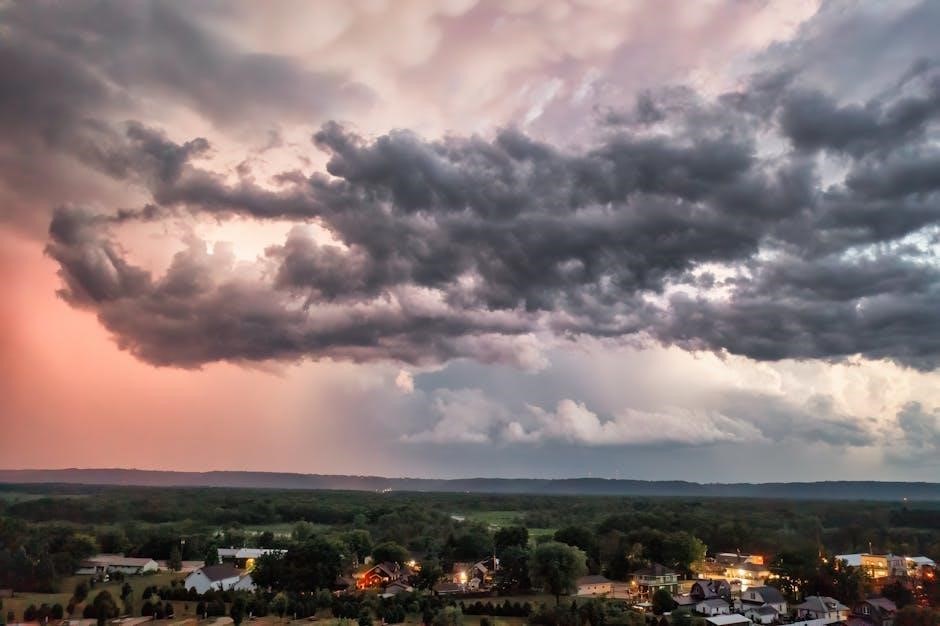bluets maggie nelson pdf
- by blaise

Maggie Nelson’s Bluets is a captivating and deeply personal work that defies traditional genre boundaries. This slim yet profound book is part memoir, part poetry, and part philosophical inquiry, all intertwined through the evocative lens of the color blue. Nelson uses blue as both a literal and metaphorical framework to explore themes of love, grief, longing, and the complexities of human experience. Written in lyrical, fragmented prose, Bluets is a meditation on the ways in which color, emotion, and memory intersect. It is a book that resists easy categorization, blending the intimacy of personal narrative with the expansiveness of philosophical reflection. For readers drawn to lyrical and introspective writing, Bluets offers a unique and unforgettable reading experience.

Overview of the Book

Maggie Nelson’s Bluets is a unique and captivating work that blends memoir, poetry, and philosophical inquiry into a single, cohesive narrative. The book is structured as a collection of 143 short, lyrical prose pieces, each of which grapples with the intersections of personal experience, emotion, and the elusive nature of human understanding. Through these vignettes, Nelson explores themes of love, loss, desire, and the search for meaning, all while using the color blue as a recurring metaphor and thematic thread.

At its core, Bluets is a deeply intimate and introspective work, yet it simultaneously expands outward to engage with broader philosophical and cultural questions. Nelson’s writing is both poetic and precise, weaving together fragments of personal narrative with references to art, literature, and history. The result is a book that feels both deeply personal and universally relatable, offering readers a window into Nelson’s inner world while inviting them to reflect on their own experiences of love, grief, and longing.

The book’s structure is deliberately fragmented, with each short piece building on the last to create a cumulative effect. This format allows Nelson to explore multiple threads of thought and emotion without adhering to a traditional narrative arc. Instead, the reader is invited to immerse themselves in Nelson’s stream of consciousness, following her as she navigates the complexities of human relationships, the passage of time, and the enduring power of art to capture and express the inexpressible.
One of the most striking aspects of Bluets is its ability to balance the personal with the philosophical. Nelson’s reflections on her own life—her experiences of love, heartbreak, and loss—are interwoven with meditations on the nature of color, perception, and language. The color blue, in particular, serves as a rich and multifaceted symbol, representing both the beauty and the melancholy that Nelson encounters in her life and in the world around her.

Throughout the book, Nelson also engages with the work of other writers, artists, and thinkers, drawing on a wide range of sources to enrich her own reflections. From the works of William Gass to the paintings of Joan Mitchell, Nelson’s references add depth and texture to her narrative, highlighting the ways in which art and literature can provide solace, inspiration, and a deeper understanding of the human condition.
Published in 2009 by Wave Books, Bluets has been widely praised for its innovative style and its unflinching exploration of difficult emotional terrain. The book has been described as a modern classic, one that challenges readers to think differently about the ways in which they experience and express their own emotions. Its unique blend of poetry, prose, and philosophy has made it a favorite among readers who appreciate lyrical and introspective writing.
In recent years, Bluets has also been adapted into a stage play, further demonstrating its enduring appeal and versatility. The play, which premiered in London’s West End, brings Nelson’s words to life in a new and dynamic way, offering audiences a fresh perspective on the themes and emotions that are central to the book.
For readers who are drawn to works that combine personal narrative with philosophical reflection, Bluets is a must-read. It is a book that lingers in the mind long after the final page has been turned, offering insights into the complexities of human experience and the ways in which art can help us make sense of the world—and of ourselves.
Genre and Style
Maggie Nelson’s Bluets is a work that defies easy categorization, blending elements of prose, poetry, and philosophical inquiry into a unique and innovative form. The book is often described as a genre-defying hybrid, one that challenges traditional notions of narrative and pushes the boundaries of literary expression. At its core, Bluets is a deeply introspective and lyrical exploration of personal experience, but it is also much more than that. It is a meditation on the nature of perception, the limitations of language, and the ways in which we attempt to make sense of the world around us.
Nelson’s writing style in Bluets is characterized by its lyricism, precision, and emotional candor. The book is composed of 143 short, fragmented prose pieces, each of which reads like a miniature essay or poem; These vignettes are both deeply personal and universally relatable, offering glimpses into Nelson’s inner world while inviting readers to reflect on their own experiences of love, loss, and longing. The brevity of each piece belies their depth, as Nelson manages to convey complex emotions and ideas with remarkable economy and grace.
One of the most striking aspects of Nelson’s style is her use of language. Her prose is both poetic and precise, often evoking the imagery and rhythm of poetry while maintaining the clarity and directness of prose. This blending of forms allows Nelson to explore a wide range of themes and ideas, from the personal to the philosophical, in a way that feels both intimate and expansive. Her writing is also marked by a deep sense of vulnerability, as she confronts difficult emotions and experiences with unflinching honesty.
In terms of genre, Bluets can be seen as part of a growing tradition of hybrid or genre-blurring writing. Nelson’s work is often associated with the essay form, but it also draws on elements of memoir, poetry, and even philosophical inquiry. This hybridity is one of the book’s greatest strengths, as it allows Nelson to explore themes and ideas that might be difficult to address within the constraints of a single genre. The result is a work that feels both deeply personal and intellectually rigorous, offering readers a unique and multifaceted reading experience.

Nelson’s use of the color blue as a recurring metaphor and thematic thread is another key element of her style. Blue is woven throughout the book, serving as both a literal and symbolic presence. It represents a range of emotions and ideas, from the melancholy and longing that permeate much of the book to the beauty and transcendence that Nelson seeks to capture. The color blue also serves as a kind of anchor, grounding Nelson’s reflections in a shared cultural and emotional landscape while allowing her to explore the complexities of personal experience.

The philosophical and intellectual dimensions of Nelson’s writing are also central to the book’s style. Throughout Bluets, Nelson engages with a wide range of thinkers and writers, from Wittgenstein to Joan Didion, drawing on their ideas to enrich her own reflections. Her writing is deeply informed by a sense of curiosity and intellectual curiosity, as she seeks to understand the ways in which we perceive and experience the world. At the same time, however, Nelson’s philosophy is always grounded in the personal, as she uses abstract ideas to illuminate her own experiences and emotions.
Despite its intellectual rigor, Bluets is ultimately a deeply accessible and engaging work. Nelson’s writing is marked by a sense of warmth and humor, as well as a willingness to confront difficult emotions and experiences head-on. This combination of vulnerability and intellectual curiosity makes the book both moving and thought-provoking, offering readers a unique and unforgettable reading experience.

Themes Explored in “Bluets”
Maggie Nelson’s Bluets delves into a rich tapestry of themes, weaving together personal and philosophical reflections. At its core, the book explores grief, love, and longing, using the color blue as a metaphor for melancholy and transcendence. Nelson examines the fragility of human connection and the ways in which loss can both devastate and transform us. She also grapples with the limitations of vision and language, highlighting the impossibility of fully capturing experience. Through her lyrical prose, Nelson reflects on the interplay between memory, desire, and the elusive nature of truth. The book is a profound meditation on the human condition, offering insights into the complexities of emotion and the search for meaning in a chaotic world. Nelson’s vulnerability and intellectual depth make Bluets a deeply resonant and thought-provoking work.

The Color Blue as a Metaphor
Maggie Nelson’s Bluets masterfully employs the color blue as a rich and multifaceted metaphor that weaves together personal narrative, emotional depth, and philosophical inquiry. Blue, often symbolizing sadness or melancholy, is used by Nelson to represent her emotional state during periods of love, loss, and longing. This metaphor serves as a unifying thread throughout the book, connecting fragmented narratives and personal stories into a cohesive exploration of human experience.
Nelson’s use of blue also delves into the elusive and the ineffable, symbolizing aspects of life that are difficult to articulate. The vastness of the sky and ocean, often associated with blue, mirrors the overwhelming and infinite nature of human emotions. This metaphor allows Nelson to convey the complexity of love and loss, where emotions can inspire and overwhelm simultaneously.
The color blue may also represent different shades of experience, with darker hues symbolizing grief and lighter tones embodying hope. This nuance adds depth to the metaphor, reflecting the varied and intricate aspects of emotional life. Furthermore, Nelson’s personal connection to blue enriches the metaphor, linking specific life experiences to broader themes, making it more relatable and impactful for readers.
Culturally, blue has historical significance, such as the rarity of ultramarine pigment, which Nelson might use to symbolize the preciousness of love and beauty. This connection to cultural narratives adds layers to her metaphor, bridging personal story with larger historical contexts.
Nelson’s metaphorical use of blue also reflects the philosophical exploration of perception and meaning. By associating her emotions with a specific color, she invites readers to share in her vulnerability and intimacy, creating a profound connection through the shared experience of blue.
In essence, the color blue in Bluets is a powerful symbol that encapsulates the complexity of human emotions, the limitations of language, and the interconnectedness of love, loss, and memory. Nelson’s use of blue as a metaphor elevates her narrative, offering readers a deeply resonant and intellectually engaging exploration of the human condition.
Related posts:
Discover Maggie Nelson’s lyrical exploration of love, loss, and desire in “Bluets”. Download the full PDF now and dive into this poetic masterpiece.
Posted in PDF